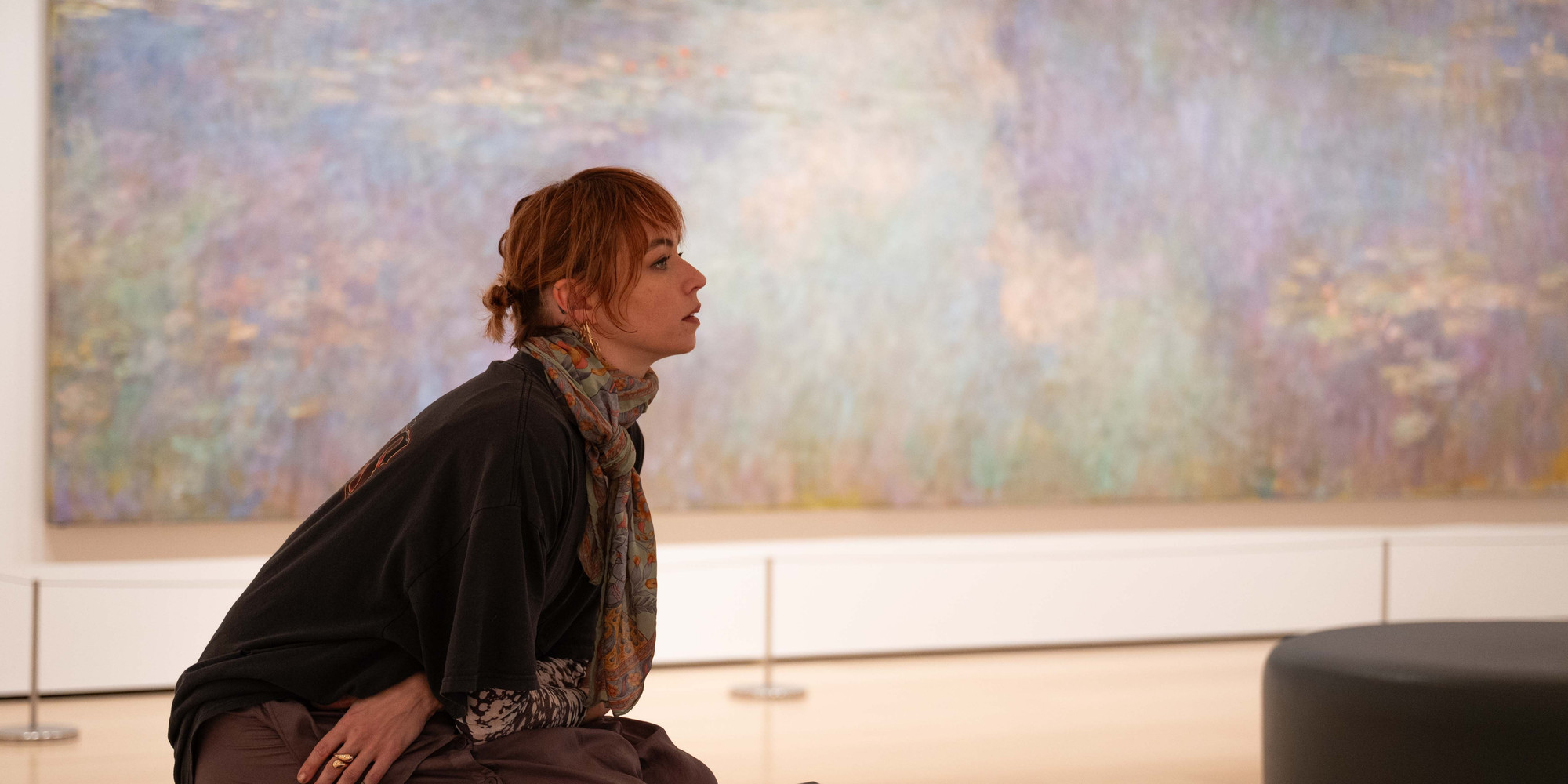
MoMA Mixtape: Monet’s Water Lilies Knocks Jess Bush off Her Feet
The Star Trek actor gets physical pairing art and music.
Jess Bush
Mar 19, 2024
Jess Bush is an out-of-this-world actor. She first grabbed my (and many others’) attention as Nurse Chapel on Star Trek: Strange New Worlds. But I’ve come to see another side of her, too. Before Star Trek, she had a growing practice as a mixed-media artist, and she shares thoughtful visual essays about art and music on her social media. All of those characteristics make for a great mixtape guest.
Jess took this assignment seriously, and tracked down art at MoMA that truly inspired music in her. She told me that the art she likes and the art that inspires music can be two different things. For her, music has always been a physical expression; she gravitates toward art that provokes a strong physical reaction. Hold on tight, the mixtape may knock you over.
—Naeem Douglas, content producer
Montien Boonma’s House of Hope + Green-House’s “Middlemist”
Boonma built the House of Hope after his wife died of cancer. He said, “I just wanted the world to stop.” When I walk into this installation, the smell of warm spices envelops me, and I’m gently guided into a tunnel of what feels like a cleansing fire.
It took me to a very specific emotional place, after the pain of losing something or someone. It’s after fighting to hold on, to deny, to reach, wail, and strain until your arms are weak and your chest hurts. You’re completely spent, and there’s nothing left to do but surrender and accept loss. In this moment between letting go and moving forward again, there’s a peaceful emptiness where the pain has burnt itself up, and you’re left in the quiet to be present with yourself. I wanted to find a song that captured this peaceful, grounding emptiness. The place where we start again. “Middlemist” sounds like a lullaby for grownups, wrapping you up in comforting, gentle aural textures, and notes that lift the heaviness off of your heart.
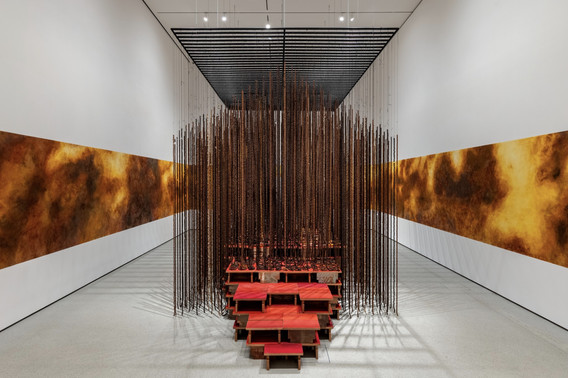
Montien Boonma. House of Hope. 1996–97
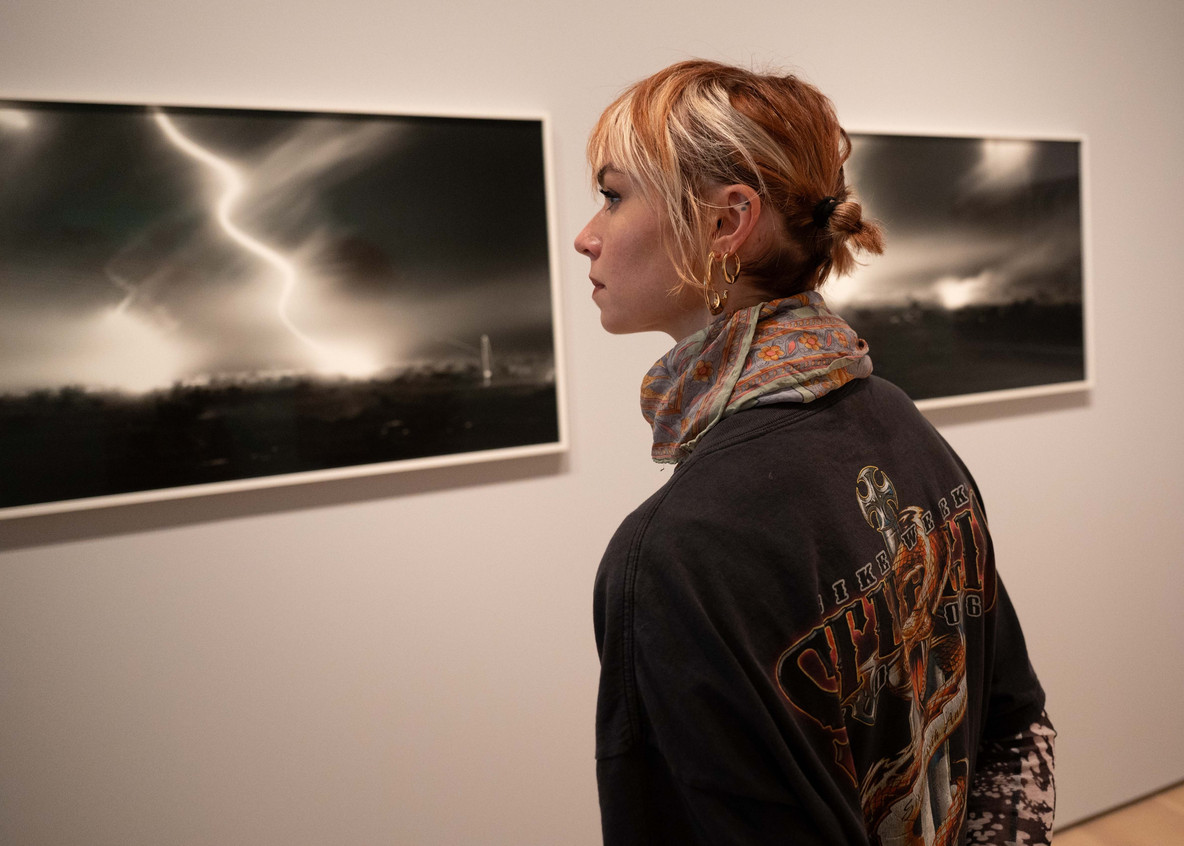
Jess Bush at MoMA
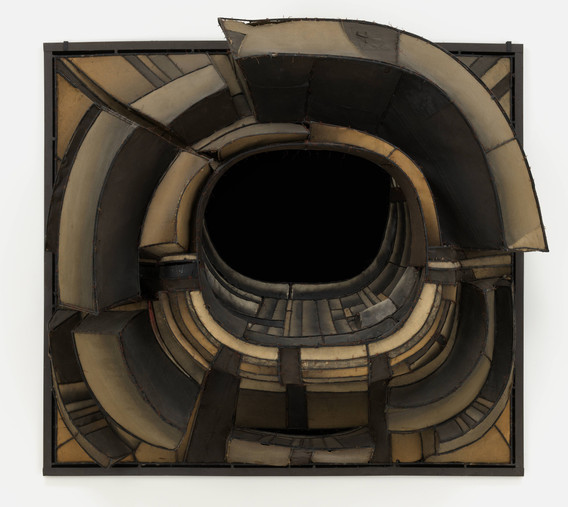
Lee Bontecou. Untitled. 1961
Lee Bontecou’s Untitled + Ross from Friends’s “Project Cybersyn”
This sculpture is brutal and industrial, but it also feels animal-like and alien, like a black hole or a portal to somewhere mysterious, futuristic, and filled with danger. It might suck me in and send me down a tube at warp speed if I get too close. “Project Cybersyn” sounds like the song I’d be listening to on the spooky journey on the other side of that hole. It sounds like running full speed in the dark in an unknown place.
Jackson Pollock’s One: Number 31, 1950 + Floating Points’s “K&G Beat”
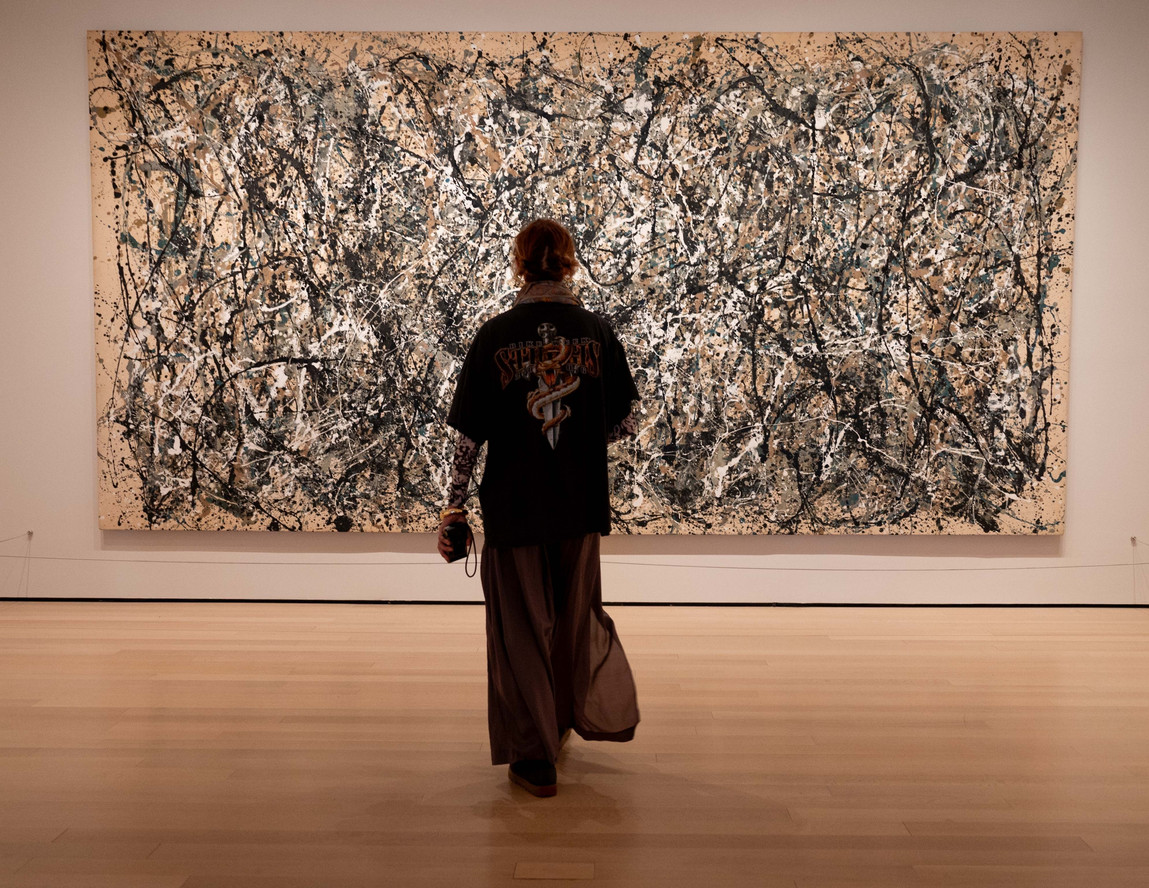
Jess Bush at MoMA. Shown: Jackson Pollock. One: Number 31, 1950. 1950
I never understood Jackson Pollock’s work until I saw one in person. The noise of it sinks its tendrils into you and takes over your whole brain. Somehow, it’s soothing to look at. It hypnotizes you. The song “K&G Beat” evokes four words for me: severity, urgency, yearning, and searching. When I stand in front of this painting and lower my defenses, Pollock’s tendrils have the same personality when they reach into me.
Yayoi Kusama’s Accumulation No. 1 + The Comet Is Coming’s “The Universe Wakes Up”
Kusama’s chair is grotesque, erotic, and primordial, like the pulse of nature blooming and devouring itself on and on forever. The song “The Universe Wakes Up” connects me to that same fundamental energy of aliveness: the yawning, sensual, searching, penetrating, overwhelming, violent, familiar, sexy magic trick that continues to repeat and unfold around, inside of, and between us. It was so cool to find out this was her first sculpture. A “waking up” for Kusama, too.
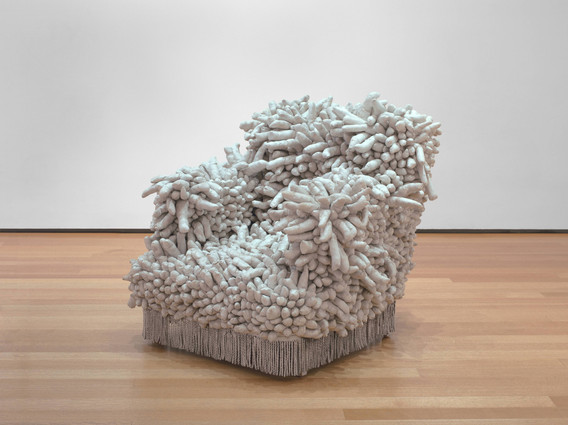
Yayoi Kusama. Accumulation No. 1. 1962
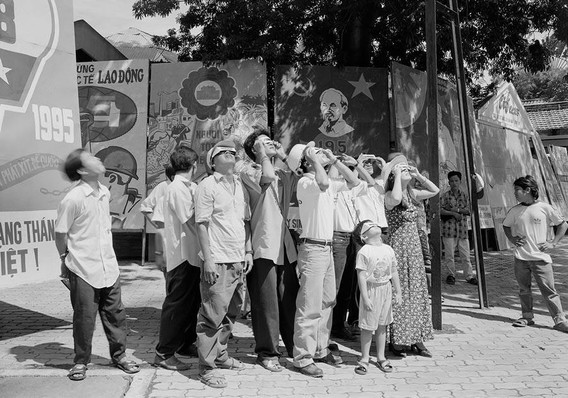
An-My Lê. Untitled, Ho-Chi Minh City from the series Viet Nam. 1995
An-My Lê’s Untitled, Ho-Chi Minh City from the series Viet Nam + KoKoKo!’s “Likolo”
I see a group of people brought together to witness something that dwarfs the minutiae of their day. They’re stopped in their tracks by the shared awe of the sun and its unfathomable energy, which makes life possible but can burn out our retinas from 100 million miles away.
I chose “Likolo” because it feels explosive, celebratory, and vibrant with reverence. After choosing this song, I found out that Likolo means “sky, above” in Lingala, the bridging language spoken in Kinshasa, Congo, where KoKoKo! are from.
That makes me think there’s something universally recognizable here. No matter where or when you’re from, we’re all just tiny naked bodies at the mercy of an insane ball of blazing gas in the sky. Keeps your jaw dropped and your mind humble.
Unidentified photographers’ “Me” series + Mazzy Star’s “Into Dust”
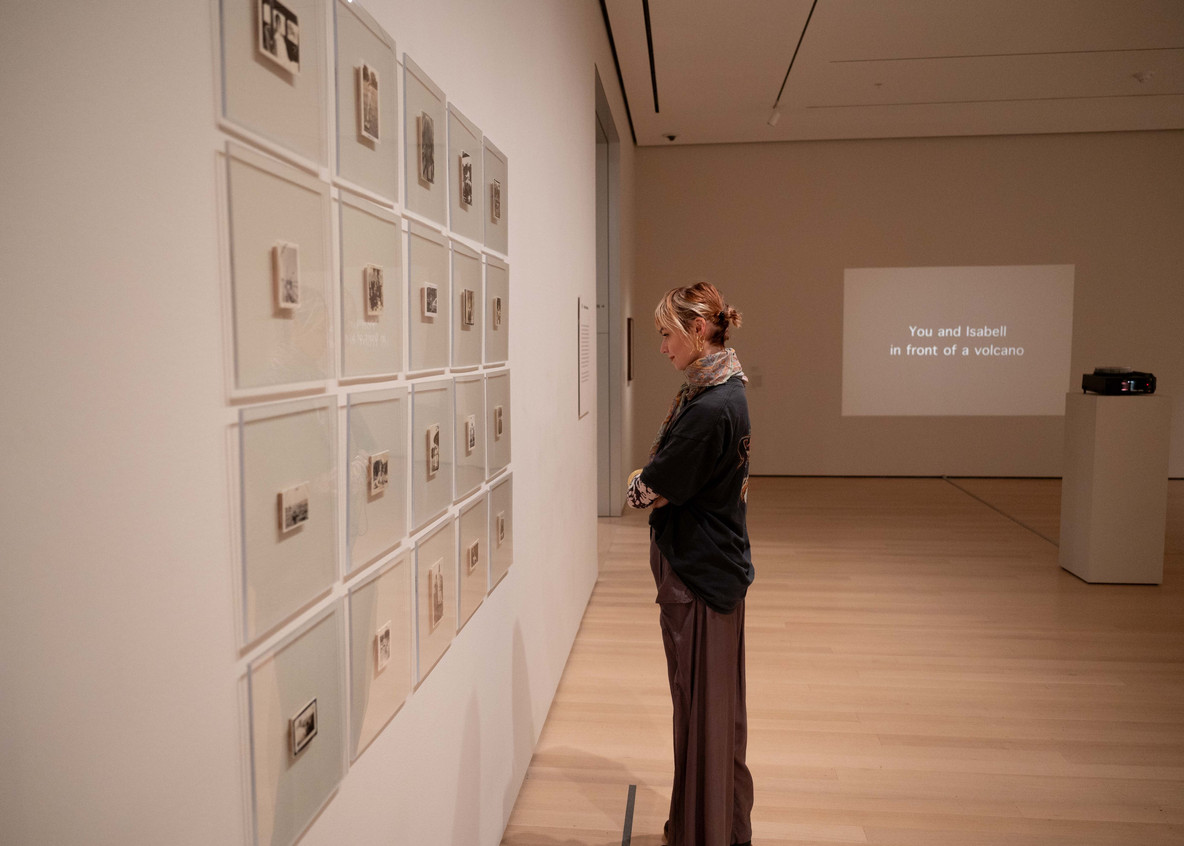
Jess Bush in the Visual Vernaculars exhibition at MoMA
This collection of anonymous personal photos makes me melancholy. A lot of the people in these images have probably passed now, including whoever wrote “Me” on them. I think of the human urge to mark out a coherent story for a life. But that can only really be done in reflection, at the end. I think of the energy I’ve wasted in the past, worrying whether I’m doing the right thing with my life, pondering if it makes for the “right” story in a linear sense. But for whom? All of these moments and relationships and memories slowly turn to dust and blow away when we do. Mazzy Star’s Hope Sandoval sings about that same fear of her own decay, of fading away. Of her interactions meaning nothing. Gosh, nostalgia makes me sad and loopy. I’ve never liked it.
Claude Monet’s Water Lilies + Ricky Eat Acid’s “Inside My House”
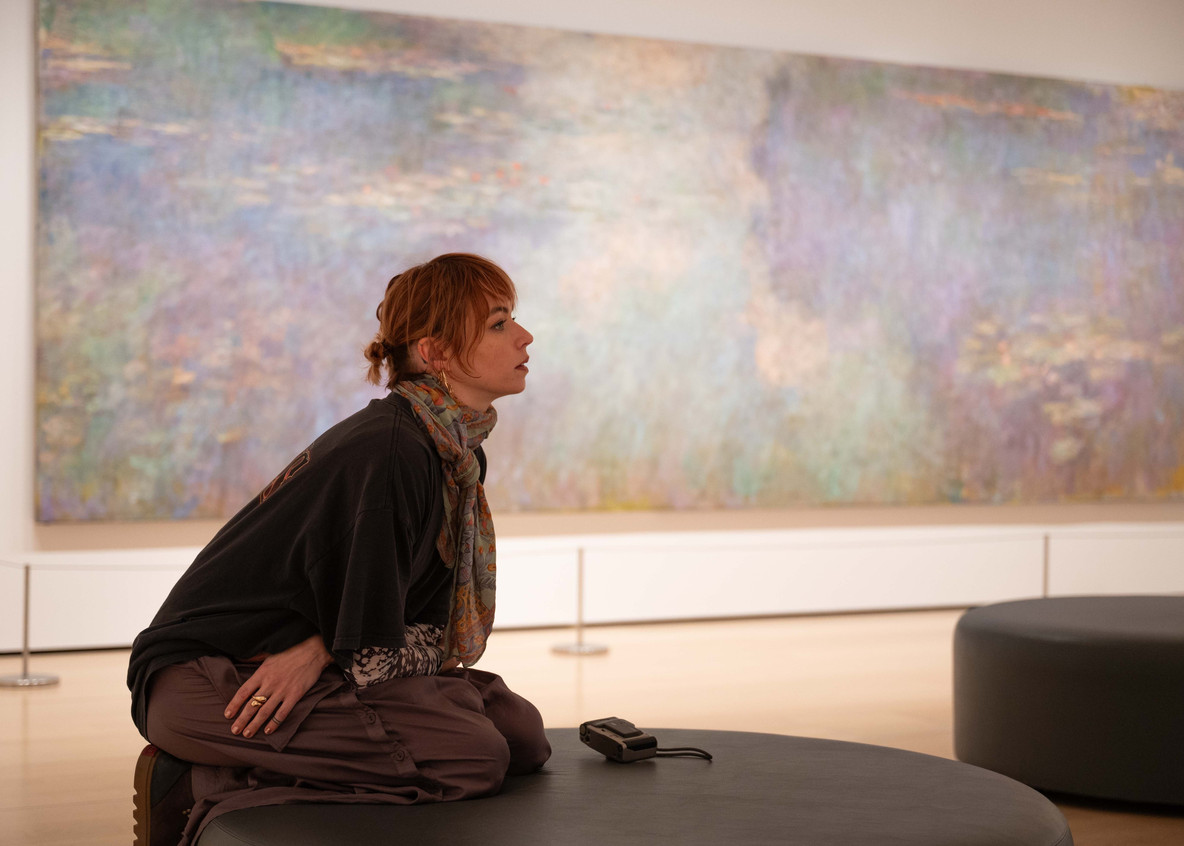
Jess Bush at MoMA. Shown: Claude Monet. Water Lilies. 1914–26
The Water Lilies triptych knocks you off your feet in the gentlest way. Seeing it in an empty and silent room was a very cool experience. Monet painted these works in the twilight of his life, and continued to rework them until he died. I see them as an act of worship to nature, and his 12 years of devotion and reverence is palpable when you stand in the room. “Inside My House,” by Ricky Eats Acid, conjures the giddy feeling of complete infatuation that Monet must have felt for his garden.
Robert Frank’s Black, White and Things + Four Tet’s “Parallel 6”
Frank’s photo series captures what I love about big, heaving cities: the roar of overlapping lives that you can let wash over you like a big wave or focus on to find something intimate, deeply human, and often weirdly serendipitous. I think the song “Parallel 6” sounds like loads of little spirits on their own way to somewhere. You can let it wash over you, or you can focus in and follow just one of them, imagining where they’re going.
Some of the pictures feel like private, lonely moments in the middle of hives of activity. Some capture the feeling of moving in harmony and unison with others because where you are is so densely populated that you have no choice but to submit to the flow of the crowd. I love this sensation, the forced togetherness that breaks through any seriousness you might be holding on to.
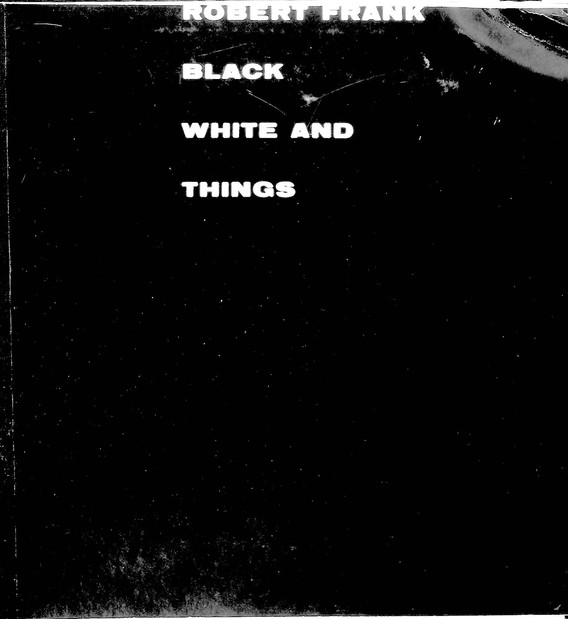
Robert Frank. Black, White and Things. 1952
Jess Bush is an actor and visual artist. Her acting work includes playing Nurse Christine Chapel on Star Trek: Strange New Worlds. In 2019 she began exhibiting her Bee Totem series, in which she collects dead honey bees from beekeepers and preserves them in crystal resin spheres.
Related articles
-
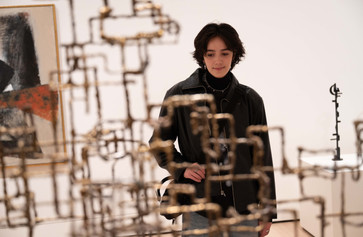
Playlist
MoMA Mixtape: Edward Hopper Feels Like Home
Iris Olympia searches for a familiar connection between art, music, and the soul.
Iris Olympia
Feb 22, 2024
-
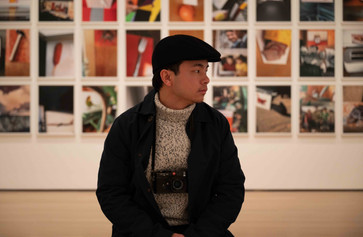
Playlist
MoMA Mixtape: What Would Jay Z Meeting Ellsworth Kelly Sound Like?
Photographer Chris Chu creates an ode to hip-hop.
Chris Chu
Jan 31, 2024

